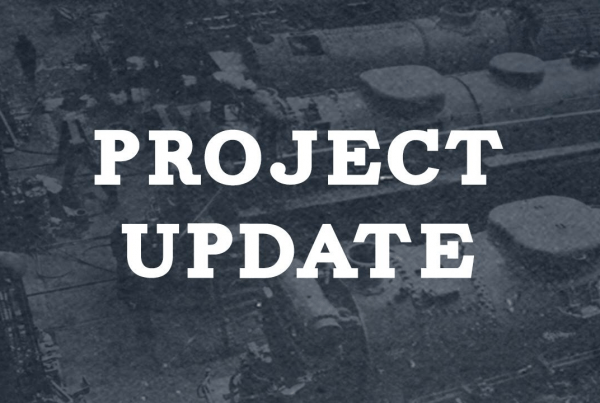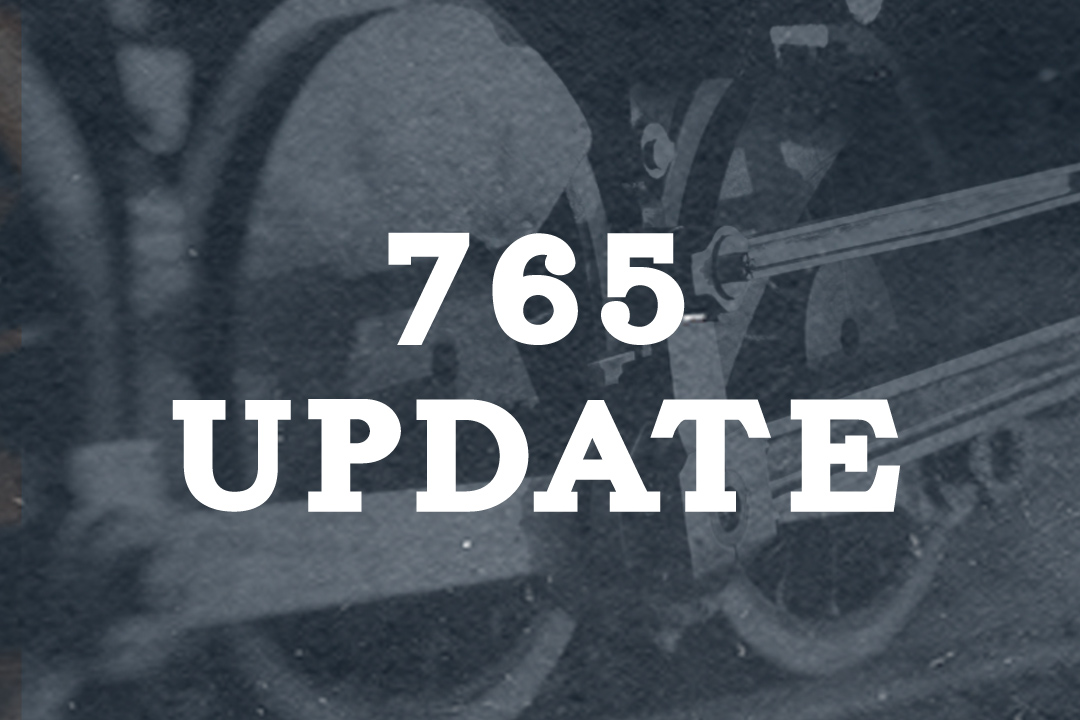Submitted by Tom Nitza
removed to see why the coolant drained very slowly and we found that the valve was restricted with years of sediment.
A new horn mount was fabricated and that’s ready to install.
The last of the old starter cables were removed. Under the cab floor there’s literally inches of sediment consisting of dirt, grime, rust and what appears to be layers of stone dust from when the engine labored in a quarry. Over time this dust had hardened and we literally had to chip
it away. While I made a parts run John chipped away and then needle gunned the area where the new battery cables would be routed. He removed 1 1/2 five gallon buckets of debris. We had previously done this to other areas under the floor and more remains to be done. One interesting find was that the locomotive at one time had a fuel gauge because the sending unit is still intact, but the wires were removed long ago.
Finally it was time to install the new cables. On the #1 end we were able to use the same path that the old cables took to the starter and reuse most of the old mounting blocks. For the #2 engine the old routing was inaccessible, in fact some of the old cables are still in place. We
decided to use flexible conduit to protect the new cables and routed them above the old cables and under the air compressor. The new cables are color coded which did help in keeping things straight.
The last step was to install and crimp the lugs onto the ends of the cables and tighten all the connections. Due to a measuring error on my part, one cable was a foot short so we had to splice in a section of cable. From start to finish this battery box/battery/cable project has
provided a number of challenges, frustrating at times. However, it’s now complete and the locomotive will be more dependable. Replacing the old cables was definitely a good decision because as we moved them around to remove them pieces of insulation were literally falling off.
There is one last step and that will be to fabricate some new cable clamps in a few places where we used an alternate routing and where the cables connect to the battery box.
Prior to leaving for the day we did hit the starters on both engines and they both cranked. Next week we’ll finish up the cable clamps, mount the horn and attend to some other details. We’ll also start both engines and move the locomotive outside and let it run for an hour to check the #2 coolant system for leaks. Not likely we’ll see any.
Most of the work we’ve done on the locomotive over the years isn’t readily visible, but it’s all been necessary to maintain dependability. The only really visible change is the battery box. Hopefully next year we can spend time attending to some of the cosmetic issues, and there’s
quite a few of those.
Helping this week were Dave and Jim. Also, a note of thanks to the 358 group for allowing us to use some left over cable they had as well as some lugs and heat shrink tubing.
Work continues next week on Wednesday and Thursday.


